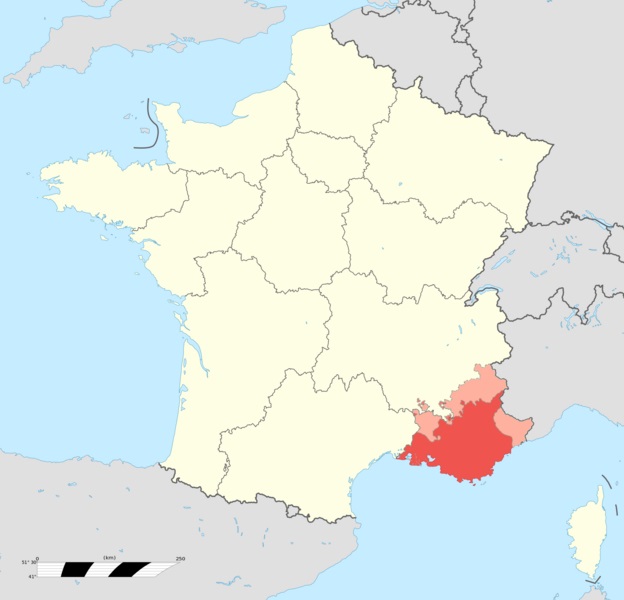Provence Rosé (France)
Rosé wines account for almost 2/3 of the wine production in Provence.
The dominant grape in a Provence Rosé is Grenache (minimum 60%).
Provence Rosé Flavors
Strawberry |
Grapefruit |
Orange |
Melon |
Rose Petals |
Herbs |
Seashell |
Minerals |
Strawberry, Orange, and Watermelon are typical Provence Rosé flavors.
Notes of Rose Petals, fresh Herbs, and a Salty Minerality.
Provence Rosé Profile
Rosés from Provence are Dry, Zesty, and high on Acidity:
| SUGAR: | Dry (3 g/l) |
| BODY: | Light |
| FRUIT: | Medium - Low |
| ACIDITY: | Medium High |
| ALCOHOL: | 11-12% ABV |
|
Serving Temerature: 10-12°C (50-54°F) | |
Food Pairing
Aperitif |
Grilled Vegetables |
Olive Oil |
Seafood |
Salmon |
Tuna |
Ham |
Chicken |
Provence Rosés are very food friendly, but pairs best with light dishes.
Excellent Pairings
Salads. Appetizers. Aioli.
Garlic. Olives. Olive Oil.
Herbes de Provence. Rosemary.
Basil. Mint. Tarragon. Thyme.
Tomatoes. Radish. Capers.
Grilled Vegetables. Zucchini.
Fennel. Artichoke. Asparagus.
Mediterranean Seafood.
Anchovies. Grilled Sardines.
Prawn Cocktail. Shrimp Salad.
Calamari. Crab or Lobster Salad.
Grilled Fish. Grilled Tuna.
Salmon. Gravlax. Sushi. Sashimi.
Chicken. Turkey. Ham.
French Specialities
Olive Tapenade.
Tomatoes Provençal.
Pistou (Provençal Pesto).
Veau Tonnato (Veal in Tuna Sauce).
Pissaladière (Onion and Anchovy "Pizza").
Bouillabaisse (Seafood dish of Marseille).
Escabeche (Fried Marinated Sardines).
Ratatoulle (on Toast).
Cheeses
Mild Sheep Chesees. Feta. Brie
Cotes de Provence AOC
The Cotes de Provence AOC covers 80% of the Rosé production in Provence.
The dominant grape Grenache (minimum 60%) is typically blended with Syrah, Cinsault, and Mourvedre.
AOC name: Appellation Côtes de Provence Controlée.
Area: Côte d'Azur (the French Riviera) from Aix en Provence to Nice.
